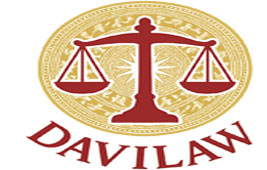Some issues on mergers and acquisitions (M&A) of enterprises
1. General Issues Concerning Mergers and Acquisitions (M&A)
In order to achieve economies of scale, a number of enterprises currently engage in the acquisition of part or all of the shares of another company, treating the acquired entity as a subsidiary. This strategy serves to enhance operational efficiency and expand the market share of the acquiring company. The brand name of the acquired company may either be retained or changed, depending on the decision of the acquiring party.
In acquisition transactions, the consideration may be paid in cash, shares, or a combination of both. Another common form in smaller-scale transactions is the purchase of all assets of the target company.
For instance, if Company X acquires all assets of Company Y through a cash transaction, Company Y would be left only with cash and any outstanding liabilities, if applicable. Ultimately, Company Y may proceed to liquidate or transition into a different line of business.
Another form of acquisition is the reverse merger, which occurs when a private company acquires a publicly listed company within a relatively short period. This structure is typically utilized by private companies with significant growth potential seeking to raise capital. Upon completion of the transaction, the private company effectively goes public by issuing its shares.
According to Article 153 of the Law on Enterprises:
"One or more companies of the same type may merge into another company by transferring all assets, rights, obligations, and legitimate interests to the merging company, and at the same time, ceasing the existence of the merged companies."
Thus, a merger occurs when two or more companies—often operating in the same industry—agree to combine into a single entity with larger scale and enhanced competitiveness. The result of a merger is the formation of a new company, distinct from any of the pre-merger entities. This new company may adopt an entirely new name or a name that reflects a combination of the merging parties. Regardless of whether the name of the enterprise changes following the merger, the brand identity of the former companies may still be preserved and further developed thereafter.
2. Types of Corporate Mergers
Based on corporate structures, mergers may take various forms. The following are several common types of mergers, classified according to the relationship between the merging companies:

- Horizontal Merger: This type occurs between two companies operating in the same industry that directly compete with each other and offer similar products or services within the same market.
- Vertical Merger: This occurs between companies operating at different stages of the supply chain, such as a company merging with one of its suppliers or customers.
- Market-Extension Merger: This type involves two companies that sell the same or similar products but operate in different geographical markets.
- Product-Extension Merger: This occurs between companies offering different but related products within the same market. The purpose is often to diversify product lines and serve a broader customer base.
- Conglomerate Merger: This involves companies operating in entirely unrelated business sectors, seeking to diversify their business activities across multiple industries.
Based on financial structuring, mergers can also be categorized into two main forms:
- Purchase Merger: This occurs when one company acquires another. The acquisition may be executed through cash payments or various financial instruments.
- Consolidation Merger: In this form, both companies combine to form an entirely new legal entity under a new corporate identity. The financial resources and assets of the merging entities are consolidated into the newly established company.
3. Procedures for Company Consolidation
Pursuant to Clause 2, Article 200 of the 2020 Law on Enterprises, the procedure for consolidating companies includes the following steps:
Step 1: Preparation of the Consolidation Agreement and Draft Charter of the Consolidated Company
The company(ies) to be consolidated shall prepare a consolidation agreement and a draft charter for the new consolidated entity.
The consolidation agreement must include the following principal contents:
- Names and addresses of the head offices of the companies to be consolidated;
- Name and address of the head office of the consolidated company;
- Procedures and conditions for the consolidation;
- Labor utilization plan;
- Timeline, procedures, and conditions for converting assets, contributed capital, shares, and bonds of the consolidating companies into corresponding capital contributions, shares, and bonds of the consolidated company;
- Timeframe for implementing the consolidation.
Step 2: Appointment of Key Executive Positions
The members, company owners, or shareholders of the companies being consolidated shall approve the consolidation agreement and the charter of the consolidated company, and shall elect or appoint key managerial positions, including the Chairman of the Members’ Council, the Company Chairman, the Board of Directors, and the Director or General Director of the consolidated company.
The consolidation agreement must be sent to all creditors and publicly announced to employees within 15 days from the date of approval.
Step 3: Enterprise Registration of the Consolidated Company
The consolidated company shall proceed with enterprise registration in accordance with the provisions of the law.
4. Procedures for Corporate Merger
Pursuant to Clause 2, Article 200 of the 2020 Law on Enterprises, the procedure for executing a corporate merger involves the following steps:
Step 1: Preparation of the Merger Agreement and Draft Charter of the Merging (Receiving) Company
The companies involved shall prepare a merger agreement and a draft charter for the receiving (merged) company.
The merger agreement must include the following essential elements:
- Name and head office address of the receiving company;
- Name and head office address of the merged company;
- Procedures and conditions for the merger;
- Labor utilization plan;
- Methods, procedures, timeline, and conditions for the transfer of assets, conversion of contributed capital, shares, and bonds of the merged company into those of the receiving company;
- Timeline for implementing the merger.
Step 2: Approval of the Merger Agreement and Charter
Members, owners, or shareholders of the involved companies must approve the merger agreement and the charter of the receiving company.
The merger agreement must be sent to all creditors and publicly announced to employees within 15 days from the date of approval.
Step 3: Business Registration of the Receiving Company
The receiving company shall carry out enterprise registration procedures in accordance with the provisions of the 2020 Law on Enterprises.
5. Post-M&A Enterprise Registration Documents
The enterprise registration dossier for companies established through a merger (consolidation) is stipulated under Article 25 of Decree No. 01/2021/NĐ-CP, and includes the following documents:
- Application for enterprise registration;
- Company charter;
- Copies of the following legal documents:
+ Legal papers of the individual who is the legal representative of the enterprise;
+ Legal papers of the individual who is the owner of the company, in case the owner is an individual;
+ Legal papers of the organization, in case the company owner is an organization (except where the owner is the State);
+ Legal papers of the individual acting as the authorized representative, and the written authorization appointing such representative;
+ In case the company owner is a foreign organization, copies of the organization's legal papers must be consularly legalized;
- Merger (consolidation) agreement;
- Resolution or decision approving the merger (consolidation) agreement by the companies involved, and a copy of the minutes of the Members’ Council meeting (in the case of a multi-member limited liability company).
For mergers, the application dossier for registration of changes to the enterprise registration of the receiving company must include the corresponding documents as stipulated in Chapter VI and Clause 2, Article 61 of Decree No. 01/2021/NĐ-CP, including:
- Merger agreement;
- Resolution and meeting minutes of the receiving company approving the merger agreement;
- Resolution and meeting minutes of the merged companies approving the merger agreement (except in cases where the receiving company owns more than 65% of the charter capital of the merged company);
- Certified copy of the Enterprise Registration Certificate or equivalent legal document of the merged companies.









